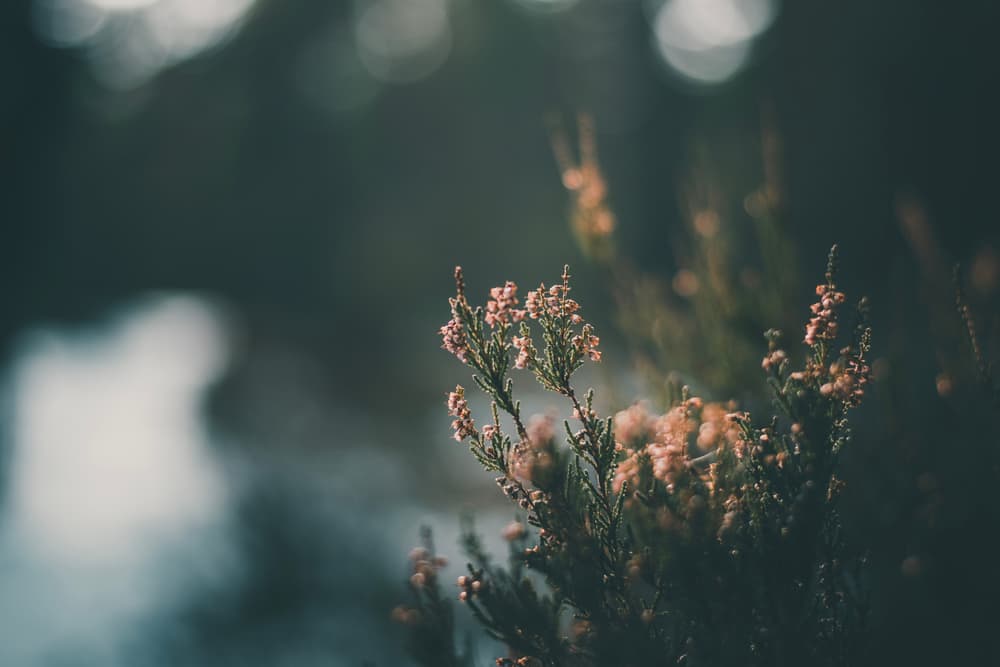Woody Or Leggy Heather? Expert Nursery Growers Share 5 Rejuvenation Tips

HEATHERS > REJUVENATION
Reviewed By COLIN SKELLY

Colin is a Horticulturist and Horticultural Consultant with experience in a range of practical and managerial roles across heritage, commercial and public horticulture. He holds the Royal Horticultural Society’s Master of Horticulture award and has a particular interest in horticultural ecology and naturalistic planting for habitat and climate resilience.
Contributions From DAVID EDGE

David has had over 40 years of experience with growing heathers and is the head proprietor at Forest Edge Nurseries, which was first established in 1974 and is home to The Heather Garden. David and his team have been awarded several accolades from the RHS, including a Silver-Gilt Medal at the Hampton Court Palace Garden Festival in 2019. He was also the chairman of The Heather Society before it closed in 2020.

The owner of Perthshire Heathers, Irene runs her specialist heather nursery from North Fife in Scotland. Irene has an RHS Level 2 Certificate in Horticulture at RBGE and also achieved a HNC in Horticulture at SRUC Elmwood. Her nursery is endorsed by the RHS and has close affiliations with Heather World.
IN THIS GUIDE
HEATHER GUIDES
Container Growing
Pruning
Rejuvenation
Tree Heather
Heather that has become woody or leggy can be an eyesore in your garden – but all hope is not lost.
With its evergreen foliage, brightly coloured blooms and year-round hardiness, heather is a popular choice for gardeners across the UK.
In this guide, we’ve collaborated with heather experts, David Edge and Irene Lang.
“In my early teens, I worked with heathers at a local nursery and appreciated the wide range of varieties,” shares David.
“In the 1970’s they first gained publicity and recognition for their qualities and this stimulated my interest in collecting and growing them for myself.
“The qualities that I appreciated then remain the same, especially with the plant’s concern for bees and butterflies, and for providing an environment and shelter for other wildlife.”
The fact that it’s a native of this country makes it an ideal option in all weathers, while the little maintenance required means that novice horticulturalists generally find it easy to work with.1New Forest National Park Authority. (2019, September 25). Heather. Retrieved March 16, 2023, from https://www.newforestnpa.gov.uk/discover/plants-fungi/heathland-plants/heather/
Common Problems
Having said that, heather is not impervious to pests, blights and diseases, nor is it infallible and invulnerable.
Indeed, it’s likely that over the course of its lifetime, heather may give you cause for concern when parts of the plant turn brown or grey and it lacks the vim and vitality of its youth.

In such cases, it can be difficult to know how to coax your heather plant back from the brink and rejuvenate it once more.
While not all heather specimens will be able to be saved, there are certain tips and tricks that you can try to breathe fresh life into its roots and stems.
Here are a handful of hints on how you can revitalise a heather plant that looks like it has seen better days.
Advice To Help Revive Your Plants
1) Pre-Emptive Pruning

You know what they say about prevention – it’s invariably better than the cure.
“Trimming annually is a must to remove the old flowers and will keep the plant bushy with a tidy habit,” explains David.
The fact that you’re reading this article means it may be too late to pre-emptively prune your heather plant before it develops any issues, but it’s a lesson worth bearing in mind for next time in any case.
All heaths and heathers don’t require much in the way of dedicated care – but they will appreciate regular pruning.
That’s because trimming the plants will help them to stay dense and compact, allowing them to divert nutrients to the parts which need them the most and promote multiple blossoms.
It will also prevent the development of a woody interior, which is often the beginning of the end for heathers.
Wait until the flowering period has ended, then prune them back by removing the stems of all old flowerheads and shearing off some of the foliage – but don’t trim them back so far as to reach the bare wood.
2) Check It’s Alive

Once you do begin to experience a fatigued or fading plant, your first course of action should be to establish whether the whole plant is dead or dying.
Lacklustre growth at the forefront of the plant can hide healthy stems underneath, while a heather that still appears healthy could already be in the first stages of decay.
There are three main ways to check if a heather plant is alive or not.
The first involves your sense of touch: handle the heather’s foliage and flowers to see if they’re dry and brittle, since this could be a tell-tale sign that it’s on its way out.
Next, break off a single stem of the plant. If it’s pliable and green or white inside, it’s still alive; if it snaps in half easily, it could be dead.
Finally, dig a small hole nearby the base of the plant to look at its roots.
White roots indicate it’s healthy, while brown, red or black ones will tell you that it’s dying or dead.
3) Compost Accordingly

One of the likeliest causes of a failing heather plant is improper soil.
Heathers love acidic soil types with good drainage, so you can encourage a flagging specimen to flourish once more by ensuring it has the nutrients it needs.
Place ericaceous compost at its base to promote new growth, or else mulch with pine needs and other organic matter to enhance the acidity of the soil.
Remember, some heather plants are more reliant on acidity than others, so check the label on your particular specimen or else look up the genus online to see if it requires special treatment.
In the right soil, heathers are hardy enough to thrive and survive for many years at a time, even when left to their own devices.
4) Hydrate To Regenerate

Another chief cause of a dying heather plant is improper irrigation.
If a specimen’s roots and foliage are allowed to dry out completely, it’ll die out within a matter of days and won’t return the following year.
That’s why it’s important to ensure that the soil surrounding the plant is always kept moist (but not waterlogged) in order to maintain adequate hydration.
“In hot and dry conditions, newly planted heathers will require watering to maintain moisture,” explains David.
“Heathers are not seen to wilt and show little sign of drought conditions until too late.”
For a plant that’s desperately in need of a drink to the point of expiration, it can be beneficial to dig it up entirely (roots and all) and soak it in a bucket of water for a couple of hours to slake its thirst.
“Soaking in a bucket is an emergency plant first aid and it will work for other plants as well as heathers if you find a casualty in the garden,” shares Master Horticulturist Colin Skelly..
“Unfortunately, it will either work (and the recovery can be dramatically quick) or it won’t.”
Then, it’s simply a case of replanting in the location of your choice.
It should also be noted that some heather varieties are susceptible to hard water, which can come out of the taps of many households in Britain.
For best results, collect rainwater and use that to irrigate your plants instead of using tap water.
You can also feed your heathers to help them recover, David suggests: “Give your heathers a light granular broadcast feed of a general fertiliser to help it maintain good, healthy growth.”
5) Relocate When Required

The final factor which could be contributing to poor performance from your heather is its location.
For starters, heather plants are hardy beasts that love the great outdoors, so if you have yours cooped up indoors, it might not enjoy the conditions.
They can also be grown in pots and containers without too much of a problem, but if you have acidic soil in your garden, it’s always a preferable option.
“Ensure that the soil type is correct for the type of heather you are planting,” says David.
“Winter and spring flowering heathers are tolerant of heavier alkaline soils, whereas most of the summer flowering heathers require an acidic and light soil type.
“Planting and other care information can be found online as well as on individual plant labels.”
While heathers are resilient under most conditions, they don’t do well in the extremes of hot or cold, so if you’re lucky enough to live in a particularly sunny part of the country, it may be an idea to plant it in a spot that enjoys at least partial shade.
Plant the heathers with enough distance between them to allow their roots to explore at will and feed and water them regularly at the outset to ensure they take to their new environment and you may just be able to bring them back from the precipice.
References
- 1New Forest National Park Authority. (2019, September 25). Heather. Retrieved March 16, 2023, from https://www.newforestnpa.gov.uk/discover/plants-fungi/heathland-plants/heather/

